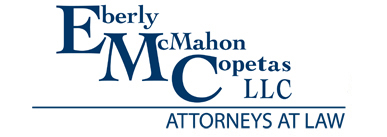
FAQ Employment Litigation
What is Employment Litigation?
Employment litigation refers to legal disputes between employees and employers, often involving claims related to employment laws. This includes wrongful termination, wage disputes, discrimination, harassment, retaliation, and contract breaches. Employees or former employees may file lawsuits against their employers to seek compensation or remedies for alleged violations of their rights under federal, state, or local laws. Employment litigation can result in settlements, judgments, or rulings in favor of either party, and in some cases, lead to class actions or regulatory actions by agencies like the Equal Employment Opportunity Commission (EEOC) or the Department of Labor (DOL).
Key areas of employment litigation include:
- Discrimination: Violations of anti-discrimination laws based on race, gender, age, disability, etc.
- Wage & Hour Claims: Issues related to unpaid wages, overtime, or misclassification.
- Wrongful Termination: Unlawful firing based on protected activities or status.
Because employment laws are complex and vary by state, individuals often need legal counsel to navigate these claims effectively.
What Are the Most Common Employment Lawsuits?
The most common types of employment lawsuits in the U.S. include:
- Wrongful Termination: Employees may claim they were fired without just cause or in violation of employment agreements.
- Discrimination & Harassment: Employees file claims alleging they were subjected to discriminatory practices based on race, gender, religion, or disability.
- Wage & Hour Claims: Workers may sue employers for unpaid wages, overtime, or misclassification as exempt.
- Retaliation: Employees who report unlawful behavior (e.g., sexual harassment or safety violations) may face retaliation, leading to lawsuits.
- Breach of Contract: Employees may file claims if their employment contracts are violated, such as wrongful dismissal without notice or severance.
These lawsuits can be filed in federal or state courts and are often complex, requiring expert legal advice to ensure a fair resolution.
What Are the Statutes of Limitations for Employment Claims?
In the United States, the statute of limitations for employment claims varies by type of claim and jurisdiction.
- Discrimination and Harassment Claims: For claims filed with the Equal Employment Opportunity Commission (EEOC), the statute of limitations is generally 180 days, but it can extend to 300 days if a state or local anti-discrimination agency is involved.
- Wage and Hour Claims: Under the Fair Labor Standards Act (FLSA), employees generally have two years from the alleged violation, or three years for willful violations.
- Wrongful Termination: There is no federal statute of limitations for wrongful termination; however, claims based on discrimination or contractual violations are subject to the applicable limitations period under state law.
It is essential to file a claim within the prescribed time frame, or the ability to pursue the case may be lost.
How Do I Know If I Have a Valid Employment Discrimination Claim?
To determine if you have a valid employment discrimination claim, you must establish that:
- You belong to a protected class: Under Title VII, this includes race, gender, age, disability, national origin, religion, and more.
- You experienced adverse employment action: This could include termination, demotion, denial of promotion, or harassment.
- Discrimination was a factor: You must show that your membership in a protected class played a role in the employer’s action.
If these elements are present, you may have a valid claim. It is important to gather evidence, such as emails, witness statements, or other documentation, and consult with an employment attorney.
What Are the Steps in an Employment Lawsuit?
An employment lawsuit typically follows these steps:
- Consultation: The employee or employer seeks legal advice to evaluate their case.
- Filing a Complaint: The aggrieved party files a formal complaint or claim with the appropriate agency, such as the EEOC or a state labor board.
- Investigation and Mediation: The agency may investigate the claim and attempt to mediate a settlement.
- Litigation: If a settlement is not reached, the case may proceed to court. The discovery process takes place, where evidence is exchanged.
- Trial: If the case doesn’t settle, it goes to trial where both sides present evidence and testimony.
- Appeal: Either party may appeal the decision if they are dissatisfied with the outcome.
Throughout the process, parties often try to reach a settlement to avoid the costs and uncertainty of a trial.
How Does the EEOC Handle Employment Discrimination Claims?
If the EEOC finds merit in the claim, it may try to resolve the issue through mediation or settlement. If a settlement is not possible, the EEOC may file a lawsuit on behalf of the employee. In some cases, the EEOC will issue a “Notice of Right to Sue,” allowing the employee to pursue the claim in court independently.
What Should I Do If I’m Facing Employment Litigation?
If you’re facing employment litigation, here are some steps to follow:
- Consult an Attorney: Employment laws are complex. A lawyer can help you understand your rights and guide you through the legal process.
- Gather Documentation: Collect all relevant evidence, including emails, performance reviews, contracts, and any records related to the dispute.
- Consider Settlement: Litigation can be costly and time-consuming. Your lawyer can help you evaluate settlement offers.
- Follow the Process: Whether pursuing or defending against a lawsuit, follow all legal procedures and timelines to avoid losing your case.
Acting quickly and seeking professional legal advice is essential to a successful resolution.
What Is the Role of an Employment Attorney?
An employment attorney specializes in laws that govern the workplace, including issues such as wrongful termination, discrimination, wage disputes, and harassment.
Their role includes:
- Advising clients about their rights and legal options.
- Representing clients in negotiations, mediations, and court proceedings.
- Drafting legal documents such as complaints, responses, and settlement agreements.
- Guiding clients through the complexity of labor laws and regulations.
An employment attorney ensures that their client’s interests are protected and that they navigate the litigation process effectively.
What Are the Potential Outcomes of Employment Litigation?
The outcomes of employment litigation can vary based on the case’s specifics. Some possible results include:
- Settlement: The employer and employee may agree to a negotiated resolution before a trial, often involving monetary compensation or policy changes.
- Judgment in Favor of the Employee: The court may award damages for lost wages, emotional distress, or punitive damages.
- Judgment in Favor of the Employer: If the court rules that the employer did not violate any laws, the case will be dismissed.
- Dismissal Without Prejudice: The case may be dismissed but could be refiled if new evidence emerges.
The litigation process is unpredictable, and both sides must be prepared for a range of outcomes.
Can I Be Fired for Filing an Employment Lawsuit?
Under federal and most state laws, employees are generally protected from retaliation for filing a lawsuit related to employment disputes. This includes claims of discrimination, harassment, wage violations, or wrongful termination.
If an employee is fired for filing a lawsuit or reporting workplace violations, it could constitute retaliation, which is prohibited under laws like Title VII and the FLSA. Employees who believe they have been retaliated against can file a complaint with the EEOC or file a separate lawsuit for retaliation.
Employees should document any retaliatory actions and consult with an employment attorney if they believe they are being penalized for asserting their legal rights.

